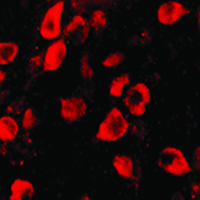miR-132 regulates the expression of synaptic proteins in APP/PS1 transgenic mice through C1q

Submitted: 1 January 2019
Accepted: 1 April 2019
Published: 3 May 2019
Accepted: 1 April 2019
Abstract Views: 2105
PDF: 888
HTML: 5
HTML: 5
Publisher's note
All claims expressed in this article are solely those of the authors and do not necessarily represent those of their affiliated organizations, or those of the publisher, the editors and the reviewers. Any product that may be evaluated in this article or claim that may be made by its manufacturer is not guaranteed or endorsed by the publisher.
All claims expressed in this article are solely those of the authors and do not necessarily represent those of their affiliated organizations, or those of the publisher, the editors and the reviewers. Any product that may be evaluated in this article or claim that may be made by its manufacturer is not guaranteed or endorsed by the publisher.

 https://doi.org/10.4081/ejh.2019.3008
https://doi.org/10.4081/ejh.2019.3008






